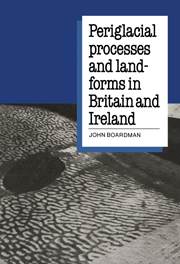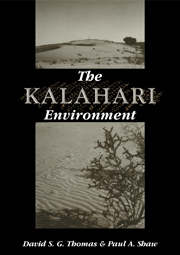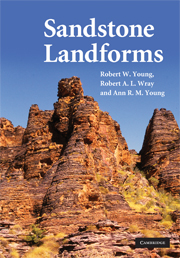
Principles of Soilscape and Landscape Evolution
£63.99
- Author: Garry Willgoose, University of Newcastle, New South Wales
- Date Published: March 2018
- availability: In stock
- format: Hardback
- isbn: 9780521858793
£
63.99
Hardback
Other available formats:
eBook
Looking for an inspection copy?
This title is not currently available on inspection
-
Computational models are invaluable in understanding the complex effects of physical processes and environmental factors which interact to influence landform evolution of geologic time scales. This book provides a holistic guide to the construction of numerical models to explain the co-evolution of landforms, soil, vegetation and tectonics, and describes how the geomorphology observable today has been formed. It explains the science of the physical processes and the mechanics of how to solve them, providing a useful resource for graduates studying geomorphology and sedimentary and erosion processes. It also emphasises the methods for assessing the relative importance of different factors at field sites, enabling researchers to select the appropriate processes to model. Integrating a discussion of the fundamental processes with mathematical formulations, it guides the reader in understanding which processes are important and why; and creates a framework through which to study the interaction of soils, vegetation and landforms over time.
Read more- Electronic source codes are provided, enabling readers to expand on examples and topics in the text
- The theory in the book will form the basis for new modelling tools which can examine the fate of man-made structures so as to better design them
- A focus on the dynamics of soils which are now emerging as critical unknowns in the critical zone research field will provide a modelling framework within which to study soilscapes
Reviews & endorsements
'This book was worth the wait! What started as a description of a pioneer modelling effort thirty years ago ended up as a comprehensive treatise on soil and landscape evolution enriched by the experience of Dr Willgoose. Hydrologists and geomorphologists interested in a quantitative understanding of what goes on the critical surface zone of the geosphere must read this book.' Rafael L. Bras, Georgia Institute of Technology
See more reviews'If it moves, model it! There is no better synthesis of all the various elements in landscapes and soil than this lifetime compilation in which Willgoose examines the many mechanisms operating in the landscape, at scales from continental tectonics down to the soil profile, demonstrating how he and others have built them into functional, mutually consistent and inter-connecting models. Its greatest strengths lie in the incorporation of soil processes - physical breakdown, mixing and weathering; and in how principles and models have been applied to the management of degrading spoil heaps.' Mike Kirkby, University of Leeds
'An outstanding synthesis that thoroughly addresses both the theoretical basis and practical application of landscape evolution modelling - a benchmark of its kind.' Stuart Lane, Université de Lausanne
Customer reviews
Not yet reviewed
Be the first to review
Review was not posted due to profanity
×Product details
- Date Published: March 2018
- format: Hardback
- isbn: 9780521858793
- length: 334 pages
- dimensions: 253 x 193 x 19 mm
- weight: 0.87kg
- availability: In stock
Table of Contents
Preface
1. Introduction
2. Constructing a landscape evolution model – basic concepts
3. A brief hydrology and geomorphology primer
4. Erosion and other water driven processes
5. Soils: constructing a soilscape evolution model – basic concepts
6. Soils: soil depth
7. Soils: physical weathering and soil particle fragmentation
8. Soils: chemical weathering
9. Soils: slow soil flow and creep
10. Soils: colloids and soil organic carbon
11. Soils: constructing a soilscape evolution model – details and examples
12. Tectonics and geology
13. High slope gravity processes
14. Vegetation and wildfire
15. Constructing a landscape evolution model – details
16. Examples of landscape evolution modelling and final thoughts
References
Index.-
General Resources
Find resources associated with this title
Type Name Unlocked * Format Size Showing of
This title is supported by one or more locked resources. Access to locked resources is granted exclusively by Cambridge University Press to lecturers whose faculty status has been verified. To gain access to locked resources, lecturers should sign in to or register for a Cambridge user account.
Please use locked resources responsibly and exercise your professional discretion when choosing how you share these materials with your students. Other lecturers may wish to use locked resources for assessment purposes and their usefulness is undermined when the source files (for example, solution manuals or test banks) are shared online or via social networks.
Supplementary resources are subject to copyright. Lecturers are permitted to view, print or download these resources for use in their teaching, but may not change them or use them for commercial gain.
If you are having problems accessing these resources please contact [email protected].
Sorry, this resource is locked
Please register or sign in to request access. If you are having problems accessing these resources please email [email protected]
Register Sign in» Proceed
You are now leaving the Cambridge University Press website. Your eBook purchase and download will be completed by our partner www.ebooks.com. Please see the permission section of the www.ebooks.com catalogue page for details of the print & copy limits on our eBooks.
Continue ×Are you sure you want to delete your account?
This cannot be undone.
Thank you for your feedback which will help us improve our service.
If you requested a response, we will make sure to get back to you shortly.
×






